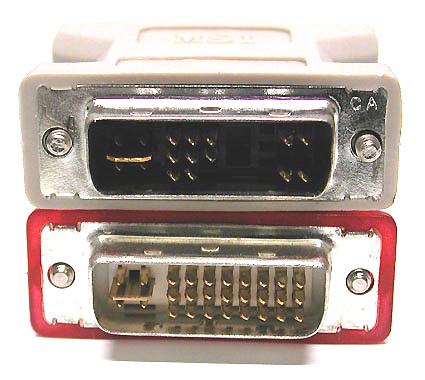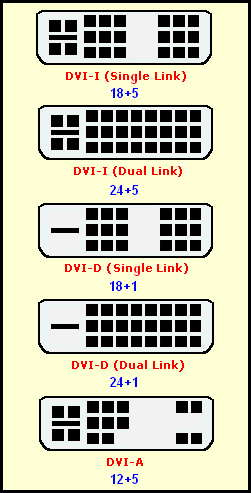PC Interfaces 101
DVI Monitor Interface
DVI is a monitor interface developed primarily for digital signals, to eliminate the need to convert digital signals into loss-prone analog counterparts on the graphics card, and then to reverse this process to go back to digital in display devices. In addition, digital TDMS signals also enjoy the advantage of allowing display devices to handle image positioning and signal synchronization.
A graphics card with two DVI ports permits simultaneous use of two (digital) monitors
Because the switchover from analog to digital graphics continues to proceed slowly, developers of graphics gear typically allow the parallel use of both technologies; among other things, this permits modern graphics cards to drive two monitors.
The widely used DVI-I interface supports simultaneous analog and digital signaling.
Though still rare, you'll also occasionally encounter DVI-D , designed exclusively for digital use (without any analog capability whatsoever).
An adapter that converts from DVI-I to VGA signals is included with many graphics cards (and some monitors) to permit continued use of older monitors that offer only the older 15-pin D-Sub-VGA connectors.
Complete list of DVI Types (the most widely used is on graphics card with both analog and digital ports, or DVI-I)
Get Tom's Hardware's best news and in-depth reviews, straight to your inbox.
Glossary
- DVI = Digital Visual Interface
-
All of the captions are attached to the wrong pictures.Reply
Ugh.
*PLEASE* leave a few blank lines between.



